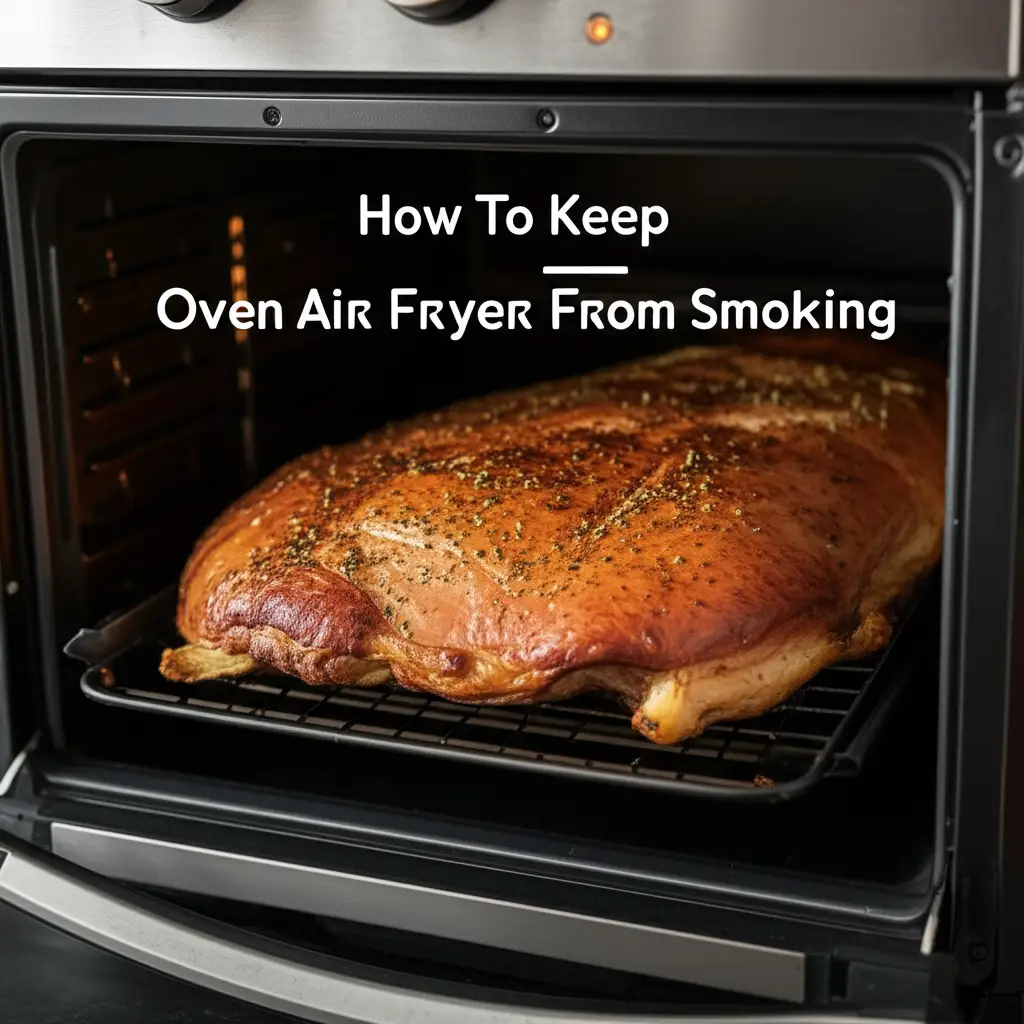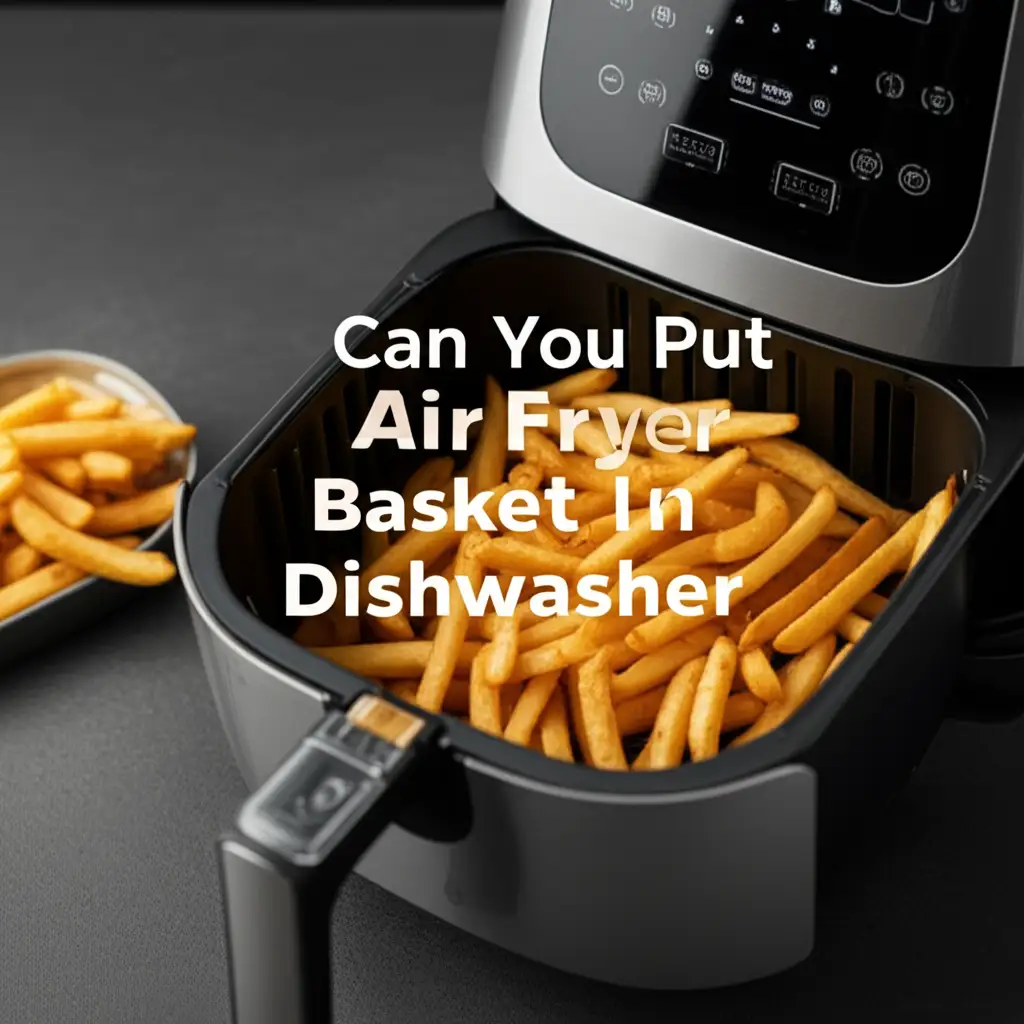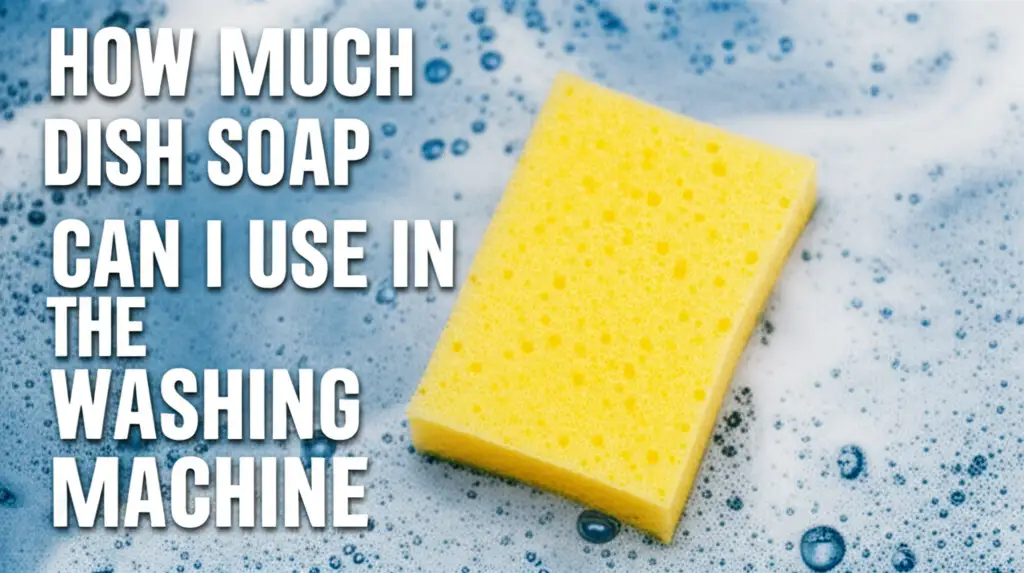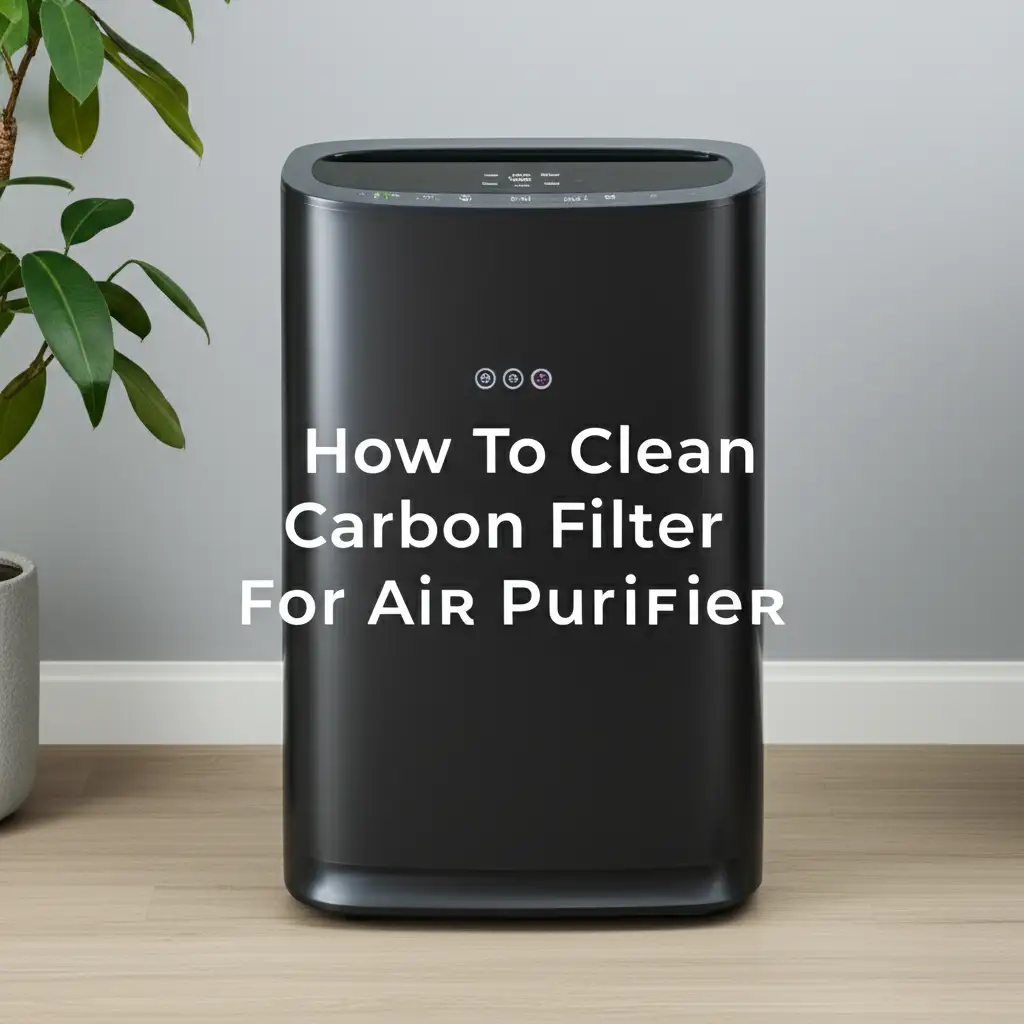· Todd Martin · Kitchen Appliance Maintenance · 17 min read
How To Keep Oven Air Fryer From Smoking

Stop Your Oven Air Fryer From Smoking: A Guide
It is frustrating when your oven air fryer fills your kitchen with smoke. A smoking air fryer is more than just an annoyance. It can trigger smoke alarms, affect food taste, and raise safety concerns. You want to cook healthy, crispy meals without the smoky drama. I understand this common problem. Many people experience it with their air frying appliances.
This comprehensive guide helps you understand why your oven air fryer smokes. We will explore common causes, from overlooked grease buildup to incorrect temperature settings. We will also provide clear, actionable steps to prevent smoke. You will learn about proper cleaning methods and smart cooking strategies. Our goal is to help you enjoy perfectly air-fried dishes without any smoke. Let’s make your air frying experience clean and enjoyable.
Takeaway
- Clean your oven air fryer thoroughly after every use. Pay attention to the basket, tray, and heating element.
- Adjust cooking temperatures for fatty foods to avoid smoke. Trim excess fat from meats.
- Use a small amount of water in the drip tray when cooking greasy items. This helps catch dripping fat.
- Ensure good airflow by not overcrowding the air fryer basket. Position it correctly in your oven.
- Always address smoke immediately. Unplug the appliance and investigate the cause.
Keeping your oven air fryer from smoking involves consistent cleaning and smart cooking practices. Regularly clean all parts, especially the basket and drip tray, to remove grease buildup and food particles. Additionally, use lower temperatures for fatty foods and ensure proper ventilation to prevent oil from burning.
Understanding Why Your Oven Air Fryer Smokes
Your oven air fryer can start smoking for several reasons. Recognizing these causes is the first step to preventing smoke. Most smoking issues relate to burnt food or excess grease. Understanding the source helps you apply the correct solution. It makes troubleshooting much easier.
Common Sources of Smoke
One primary reason for a smoking oven air fryer is residual grease. When you cook fatty foods, grease drips down. This grease can accumulate on the drip tray or heating element. If not cleaned, old grease will burn during your next cooking session. This burning produces smoke. It is a very common issue for air fryer users.
Another cause is food particles. Small bits of food can fall through the basket. They land on the heating element or the bottom of the oven. These crumbs then char and smoke as the air fryer heats up. This is especially true for foods with marinades or coatings. Always check for loose food bits.
High-fat foods themselves can cause smoking. Items like bacon, sausages, or heavily marbled meats release a lot of fat. This fat can splatter onto the heating coil. It also collects in the drip tray. When this fat reaches its smoke point, it burns and creates smoke. The appliance gets very hot.
Incorrect temperature settings contribute to smoke. Using too high a temperature for certain foods can cause them to burn quickly. This burning leads to smoke. Some oils used for cooking also have a low smoke point. They will smoke at lower temperatures. Always check your oil’s smoke point.
Finally, lack of proper airflow can worsen smoking. Overcrowding the air fryer basket can trap heat and smoke. It also prevents grease from dripping properly. Your oven air fryer needs space for air to circulate freely. Good circulation ensures even cooking and reduces smoke. Ensure the appliance has good ventilation around it.
The Crucial Role of Regular Cleaning and Maintenance
Regular cleaning is the most effective way to prevent your oven air fryer from smoking. Grease buildup and food particles are main culprits. A clean air fryer performs better and cooks food safely. This simple habit saves you from smoky kitchens. I always clean my appliance after every use.
Immediate Cleaning After Each Use
You should clean your oven air fryer right after each use. Let it cool down first. Remove the basket and drip tray. Wash these parts with warm, soapy water. Food residues are easier to remove when fresh. This prevents them from hardening.
Wipe down the inside of the oven. Use a damp cloth to clean the interior surfaces. Pay attention to the heating element area. Grease can collect there. A quick wipe prevents future burning and smoke. This routine keeps your appliance in top shape.
Deep Cleaning Your Oven Air Fryer
Schedule a deep clean for your oven air fryer regularly. This means going beyond the quick wipe. For baskets and trays, you might need to soak them. Use a degreasing dish soap to break down stubborn grease. A soft brush helps scrub away stuck-on bits.
Check the heating coil for any stuck residue. If safe, gently wipe it with a damp cloth or sponge. Make sure the appliance is unplugged. Never immerse the main unit in water. This regular deep cleaning removes hidden grease. It prevents it from becoming a smoke source.
For detailed instructions on cleaning various air fryer components, consider these resources:
Remember to clean the exterior of your oven air fryer too. A clean exterior contributes to overall kitchen hygiene. It also keeps your appliance looking new. Consistent cleaning habits extend the life of your air fryer. They also ensure smoke-free cooking.
Mastering Temperature and Food Type for Smoke-Free Cooking
Controlling temperature and understanding food types are key to preventing smoke. Different foods and oils have different requirements. Adjusting your approach can significantly reduce smoking. I have learned to adapt my cooking based on these factors. This makes a big difference.
Adjusting Temperature for Fatty Foods
Fatty foods like bacon, chicken wings, and sausages release a lot of oil. This oil can drip and burn, causing smoke. When cooking these items, consider lowering the cooking temperature. A slightly lower temperature helps cook the food thoroughly without burning the drippings. You might need to extend the cooking time slightly.
For example, if a recipe calls for 400°F (200°C) for chicken wings, try 375°F (190°C) instead. Monitor the food closely. The goal is to cook the food evenly while keeping the drippings from reaching their smoke point. This small adjustment makes a big impact on smoke production. It also results in perfectly cooked, crispy food.
Understanding Oil Smoke Points
Not all cooking oils are created equal for air frying. Every oil has a specific smoke point. This is the temperature at which the oil starts to burn and produce smoke. Oils with low smoke points will smoke easily in an air fryer. Olive oil, for instance, has a lower smoke point than avocado oil.
Choose oils with high smoke points for air frying. Examples include avocado oil, grapeseed oil, or peanut oil. These oils can withstand higher temperatures without smoking. Use only a light mist or brush of oil. Too much oil can also lead to smoke. Less oil means less residue to burn.
Prepping Foods to Reduce Grease
You can prepare fatty foods to minimize grease. Before air frying, trim visible fat from meats. For chicken, removing the skin can significantly reduce fat drippings. Pat foods dry with paper towels. Excess moisture can make oil splatter more.
When cooking foods that naturally render a lot of fat, like bacon, consider cutting them into smaller pieces. This allows for more even cooking and fat rendering. You can also place a small amount of water in the bottom of the drip tray. This water cools the fat as it drips. This prevents it from burning and smoking. This trick is very effective for greasy items.
Optimizing Your Air Fryer Setup for Better Airflow
Proper setup and usage contribute greatly to preventing smoke. Good airflow is essential for any air fryer, especially oven models. It helps cook food evenly and manages heat and grease effectively. I always double-check my setup before cooking.
Proper Placement of the Air Fryer Basket
Ensure the air fryer basket is correctly placed in your oven. Most oven air fryers come with a specific rack or position. Follow your oven’s manual for proper basket placement. Incorrect placement can obstruct airflow. It can also cause fat to drip onto parts that are too hot.
For oven models with an air fry setting, you generally place the basket on the middle rack. This position allows hot air to circulate all around the food. It also gives grease a clear path to the drip pan below. Proper positioning is simple yet vital.
You can learn more about using air fryer baskets in ovens here:
Avoiding Overcrowding the Basket
Overcrowding your air fryer basket is a common mistake. When you pack too much food in, air cannot circulate freely. This leads to uneven cooking. It also traps heat and moisture, which can cause steam and then smoke. Food also cooks slower and less crisply.
Cook food in smaller batches. Leave space between individual pieces. This allows hot air to flow around each item. It promotes even cooking and crisping. It also helps drippings fall efficiently into the drip tray. More space means less chance of burning food against the heating elements.
Ensuring Proper Oven Ventilation
Your oven itself needs proper ventilation. Make sure the oven’s vents are not blocked. Most ovens release heat and moisture through vents. If these vents are obstructed, heat can build up. This can exacerbate smoking issues.
Also, consider the overall ventilation in your kitchen. Using an exhaust fan or range hood helps. It draws out smoke and odors. Good kitchen ventilation improves air quality. It also prevents smoke from accumulating. Always turn on your fan when air frying. This creates a better cooking environment.
Smart Strategies for Dealing with Fatty and Saucy Foods
Fatty and saucy foods often pose the biggest challenge for smoke-free air frying. These items produce more drippings and can leave sticky residues. Special techniques help manage these challenges. I have found these strategies very helpful. They keep my kitchen clear.
Using Parchment Paper or Foil (Correctly)
Parchment paper or aluminum foil can be useful tools. They can line the bottom of the air fryer basket. This catches drippings and prevents them from reaching the heating element or drip tray directly. It minimizes burning grease. Always choose parchment paper specifically for air frying or baking.
When using parchment paper or foil, ensure it does not block airflow. Cut it to fit the bottom of the basket only. Never let it cover the entire basket or touch the heating element. It should be weighted down by food. If it is too light, it can fly up into the heating element. This creates a fire hazard. Use it carefully.
Adding Water to the Drip Tray
This is a simple yet effective trick. Place a small amount of water in the drip tray under the air fryer basket. For oven air fryers, this might mean placing a heat-safe dish with water on the rack below the air fry basket. The water helps cool any fat that drips down. This prevents the fat from burning and smoking.
Start with about a quarter cup of water. You might need to adjust the amount based on how much fat the food produces. This method is particularly useful for very fatty foods like bacon or sausages. It helps manage the grease and reduces smoke. It also makes cleanup easier.
Trimming Fat and Pre-Cooking Meats
Before air frying, trim excess fat from meats. For example, remove extra fat from steak or chicken thighs. Less fat means fewer drippings. This reduces the chance of smoke. You can also partially cook some extremely fatty meats beforehand.
For example, blanching bacon or rendering some fat in a pan first can help. This reduces the amount of fat that will drip during air frying. The air fryer then finishes the cooking process. This technique gives you crispy results without the smoke. It is an extra step but worth it for very greasy items.
Breading and Coating Strategies
Foods with breading or coatings can sometimes cause smoke. Loose breadcrumbs or batter can fall off. They then burn on the heating element. To prevent this, ensure your breading adheres well. Press it firmly onto the food.
Consider using a light spray of oil on breaded items instead of tossing them in oil. This helps the coating stick. It also prevents excess oil from dripping. For saucy foods, add sauces towards the end of cooking. Sugary sauces can burn easily. Adding them later helps create a glaze without burning.
Advanced Tips for Persistent Smoking Issues
Sometimes, even with regular cleaning and smart cooking, smoking persists. This can be frustrating. Persistent smoking might indicate deeper issues. These advanced tips address those more stubborn problems. They require a bit more investigation.
Inspecting the Heating Element
Over time, grease or carbonized food bits can stubbornly stick to the heating element. Even thorough cleaning might miss tiny residues. Turn off and unplug your oven air fryer. Let it cool completely. Then, carefully inspect the heating coil. Look for any black, crusty buildup.
If you find residue, try to gently scrape it off. Use a non-abrasive scrubber or a stiff brush. Be very careful not to damage the element. A small amount of baking soda paste can help loosen stubborn spots. Always ensure the element is completely dry before plugging the appliance back in. This step can often resolve lingering smoke issues.
Consulting the User Manual
Your oven air fryer’s user manual is a valuable resource. It contains specific instructions for your model. It might have unique cleaning guidelines or troubleshooting tips. Some manufacturers recommend specific maintenance procedures. They might also suggest particular racks or accessories for air frying.
Check the manual for recommended temperatures for various foods. Look for any warnings about certain food types or materials. The manual often provides answers specific to your appliance. It can help you understand special features or limitations. This is a crucial step if basic solutions do not work.
Considering Professional Servicing or Replacement
If your oven air fryer continues to smoke excessively after all troubleshooting, it might need professional servicing. There could be an internal malfunction. A faulty heating element or fan could cause issues. These problems require expert attention. Do not attempt complex repairs yourself.
If the appliance is old, consider replacing it. Older appliances might have internal wear and tear. This can lead to inefficient operation and smoking. Newer models often have improved designs. They might also feature better non-stick coatings and fat-reducing features. A new appliance can offer peace of mind and smoke-free cooking.
For specific model issues, some resources might be available:
Persistent smoke can be a sign of a deeper problem. It is important to address it. Your safety is paramount. Do not ignore continuous smoke.
Safety First: What to Do If Your Air Fryer Smokes Excessively
Excessive smoke from your oven air fryer is a safety concern. It is important to know how to react. A little smoke from burnt crumbs is one thing. Thick, dark, or acrid smoke is different. This type of smoke requires immediate action. Your safety and the safety of your home are important.
Unplug Immediately
If your oven air fryer starts smoking heavily, especially with a burning smell, unplug it at once. Disconnecting the power stops the heating process. This is the most critical first step. Do not try to open the oven door immediately if the smoke is severe.
Opening the door can provide oxygen to any potential fire. This can make the situation worse. Wait for a moment if the smoke seems to be dissipating. If it continues or increases, proceed with caution. Your safety is more important than your appliance.
Do Not Open Too Quickly
Resist the urge to open the oven door immediately. If a grease fire starts, opening the door feeds it oxygen. This can cause the flames to grow. Watch the situation for a minute or two. Often, cutting power will cause minor fires to die down quickly.
If the smoke lessens, you can carefully open the door. Use oven mitts. Be ready to close it again if the smoke or flames flare up. Once open, assess the cause of the smoke. It might be a small grease fire that has self-extinguished.
Fire Extinguisher Readiness
Keep a fire extinguisher in your kitchen. A Class K or Class F extinguisher is best for cooking fires. These extinguishers are designed for grease fires. Knowing where it is and how to use it is vital. If flames are visible and not dissipating, use the extinguisher.
Remember the PASS method: Pull the pin, Aim at the base of the fire, Squeeze the handle, Sweep side to side. Only use an extinguisher if you feel safe doing so. Never use water on a grease fire. Water can spread the grease and make the fire larger.
When to Call for Help
If the smoke is heavy and persistent, or if flames are significant, call emergency services. Do not hesitate to call 911 (or your local emergency number). Evacuate your home if the smoke becomes too much or if the fire is not quickly contained. Your life is more valuable than any appliance.
Prevention is always the best approach. Following cleaning and cooking guidelines reduces the risk of smoking. But knowing how to act in an emergency gives you confidence. It ensures you can handle unexpected situations safely. Always prioritize safety in your kitchen.
FAQ Section
Q1: Why does my oven air fryer smoke when I cook bacon?
Bacon is very high in fat. As it cooks, a lot of grease drips into the tray. This fat quickly reaches its smoke point at high temperatures. The burning fat then causes smoke. To prevent this, try putting a small amount of water in the drip tray. You can also lower the cooking temperature slightly.
Q2: How often should I clean my oven air fryer to prevent smoking?
You should clean the air fryer basket and drip tray after every use. This removes fresh grease and food particles. Perform a deeper clean of the interior and heating element every few uses, or at least once a week. Regular cleaning is the best way to prevent grease buildup and smoking.
Q3: Can old oil cause my air fryer to smoke?
Yes, old or rancid oil residue can cause your air fryer to smoke. If old grease remains on the heating element or in the drip tray, it will burn when the air fryer heats up. This creates smoke and a bad smell. Always ensure all oil and food residue is cleaned thoroughly after each cooking session.
Q4: What if my air fryer smokes even after cleaning?
If your air fryer smokes after a thorough cleaning, check the heating element closely. There might be stubborn, carbonized residue stuck to it. You can also try using a lower temperature for your food. If smoking persists, consult your oven’s manual for specific troubleshooting. It might indicate a technical issue needing professional help.
Q5: Is it safe to use a smoking oven air fryer?
A little smoke from burnt crumbs is usually harmless. However, excessive, thick, or acrid smoke indicates a problem. It could be a grease fire hazard. Turn off and unplug the appliance immediately. Do not use it until you identify and fix the smoke source. Prioritize safety.
Q6: Does adding water to the drip tray really help with smoke?
Yes, adding a small amount of water to the drip tray is an effective trick. The water cools the fat as it drips down. This prevents the fat from reaching its smoke point and burning. This method is especially helpful when air frying very greasy foods like bacon or sausages. It helps manage the grease and reduces smoke.
Conclusion
A smoking oven air fryer can be a frustrating and concerning issue. However, by understanding the common causes, you gain control. We have covered several effective strategies to keep your oven air fryer from smoking. From diligent cleaning to smart cooking adjustments, each step contributes to a smoke-free kitchen.
Remember, consistent cleaning is your first line of defense. Always remove grease and food particles after each use. Adjusting temperatures for fatty foods and choosing high smoke point oils also makes a big difference. Moreover, ensuring good airflow by not overcrowding the basket is crucial. If smoke persists, investigate the heating element or consult your manual. Prioritizing safety is paramount in every situation.
By following these practical tips, you can enjoy the many benefits of your oven air fryer. Imagine perfectly crispy meals without the smoky haze or blaring smoke alarms. Take these steps today. Experience a cleaner, safer, and more enjoyable air frying journey. Your kitchen will thank you for it. Start your smoke-free cooking adventure now!





